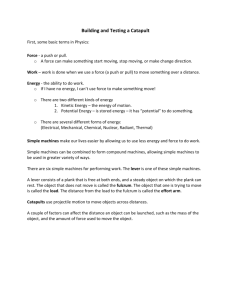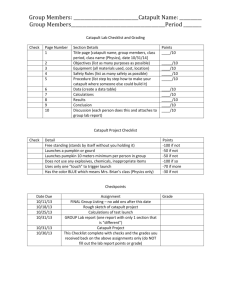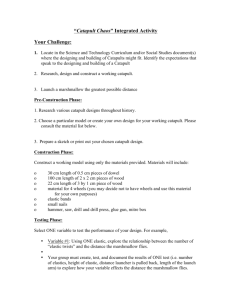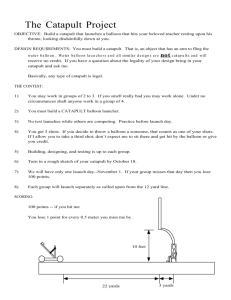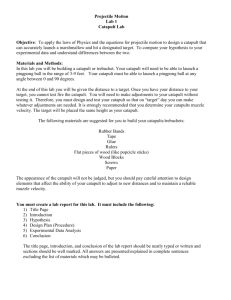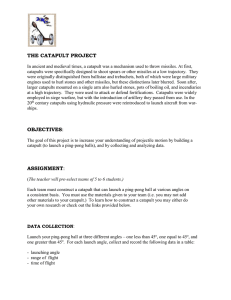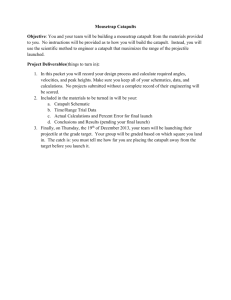Marshmallow Catapult Lab: Projectile Motion Planning
advertisement
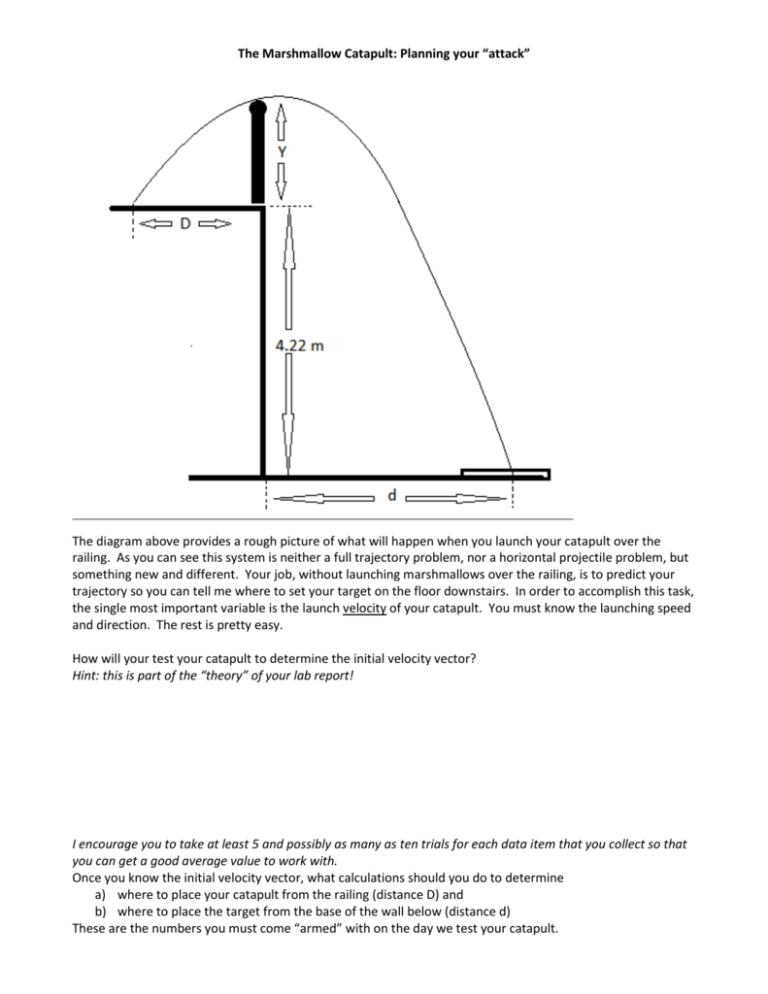
The Marshmallow Catapult: Planning your “attack” The diagram above provides a rough picture of what will happen when you launch your catapult over the railing. As you can see this system is neither a full trajectory problem, nor a horizontal projectile problem, but something new and different. Your job, without launching marshmallows over the railing, is to predict your trajectory so you can tell me where to set your target on the floor downstairs. In order to accomplish this task, the single most important variable is the launch velocity of your catapult. You must know the launching speed and direction. The rest is pretty easy. How will your test your catapult to determine the initial velocity vector? Hint: this is part of the “theory” of your lab report! I encourage you to take at least 5 and possibly as many as ten trials for each data item that you collect so that you can get a good average value to work with. Once you know the initial velocity vector, what calculations should you do to determine a) where to place your catapult from the railing (distance D) and b) where to place the target from the base of the wall below (distance d) These are the numbers you must come “armed” with on the day we test your catapult. Measurements: Things your classmates in the past have done to get the data they need. These are suggestions. There are other bits of data that you can collect to solve the problem you need to solve (i.e., the initial velocity vector), but these are a good start. Horizontal Distance: Put the catapult on a flat surface, cock and load and shoot. Measure distance to landing. Repeat and average. You can record flight time while you do this. Total Flight Time: Record the total flight time from release to impact. Average. Max Height: Find a flat tall wall. Launch your marshmallows into the wall using the same power you did for the prior measurements. Measure the impact height each time. Move catapult until you have achieved maximum height at impact with wall. Repeat and Average. You may have now found the Distance to rail for max height also. Distance to rail for max height: In order to simplify your computations, you want your marshmallow to arc over the railing outside at the highest point in its trajectory. There are other ways to solve the problem that may be easier than this method, but I won’t tell you what they are. This method most closely mirrors what we have done in class. If you can figure out a better way…


